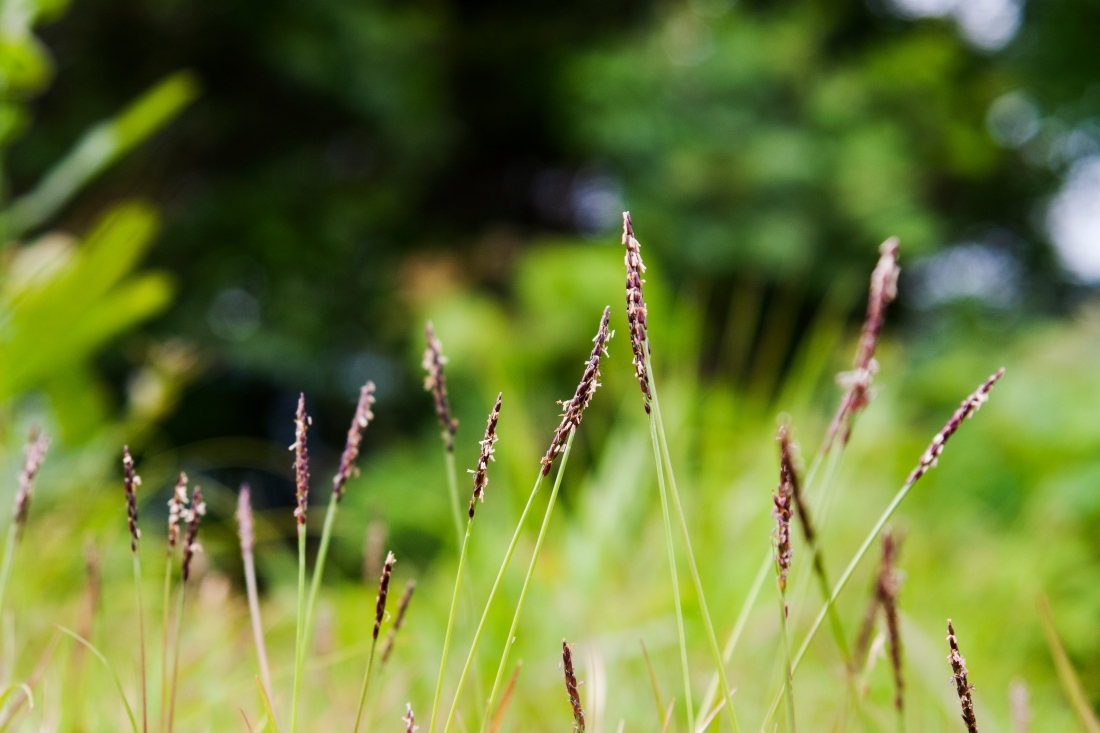 photo from https://upload.wikimedia.org/wikipedia/commons/5/59/Zoysia_japonica_3.jpg
photo from https://upload.wikimedia.org/wikipedia/commons/5/59/Zoysia_japonica_3.jpg
Zoysia japonica, also called Korean lawn grass, Japanese lawn grass or turf grass, is a unique tallgrass that indigenously grows in Asia, specifically in China, Japan and the Nanji Islands. It thrives in warmer weather and grows naturally around wet areas such as riversides and coastal areas as well as mountainous areas. The hollow stem part of the grass can grow anywhere from two to six inches and the blade itself can grow from one to four inches long, so, in total, this grass species can grow anywhere from seven to ten inches. The flower of this grass grows only up to three millimeters. The flowers may be small, but they are the basis for the existence of Z. japonica.
Z. japonica grows perfect flowers, containing both male and female parts, but stamens mature about seven to ten days after the pistils do. Because its reproductive organs mature at different times, Z. japonica reproduces through sexual reproduction. It is possible to reproduce through asexual reproduction but only if it is artificially done when both parts are matured. The reproduction and growth of Z. japonica offer benefits to humans and other living beings around it.
Z. japonica provides bother provisioning and cultural ecosystem services. This plant can be used for turf in sports fields, in parks, as well as for alluring landscapes for humans. In addition, it is also a source of food for grass-grazing animals, like deer and cattle. All of these factors are both provisioning and cultural ecosystem services because this plant gives food useful fields for spots and visually pleasing scenery of house lawns.Z. japonica is a useful and interesting species of the Nanji Islands.
The grass species Z. japonica has many factors that make it unique. It is tall grass with perfect flowers that do not reproduce asexually, even though it contains both reproductive parts to do so, and it also provides useful provisioning and cultural ecosystem services.
CS
Tsuruta S., Kobayashi M., Ebina M. 9-6-2010. Zoysia. Available: https://link.springer.com/chapter/10.1007%2F978-3-642-14255-0_16 Accessed: 10-13-17.
Very interesting, I didn’t know there was so much to learn about grass!
LikeLiked by 1 person
Super cool grass! Is it possible for it to grow in Ohio?
LikeLike
I learn a lots about the Zoysia japonica from this blog. Interestingly , I have never seen any kinds of grass can grow flowers before ,while this blog told me that Z. japonica is grew in my hometown.When I back to China, I will try to look for the flowers . The grass species Z. japonica is so special , because it does not reproduce asexually. In my mind, grass grows everywhere and almost looks the same, while this blog shows me the special grass species .
LikeLike
I did not know that there are so many different ways to use this type of grass. I thought people only use grass to feed animals or it grows on its own in the garden, but in fact people choose Z. japonica as the grass for the turf in sports fields.
LikeLike